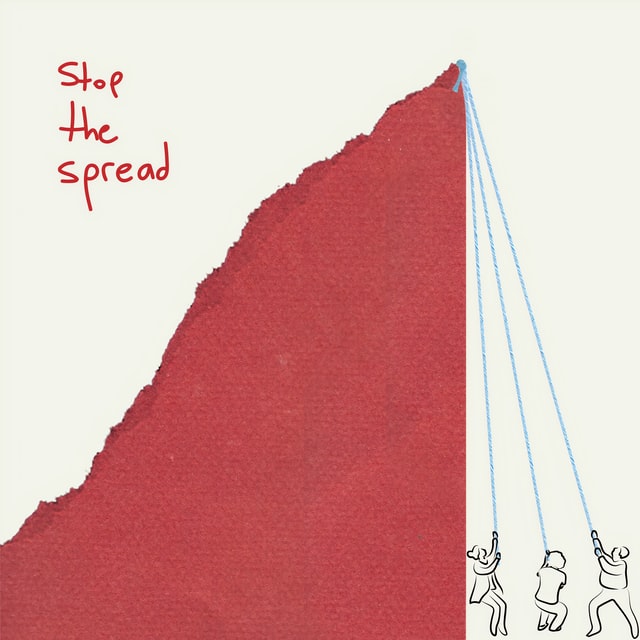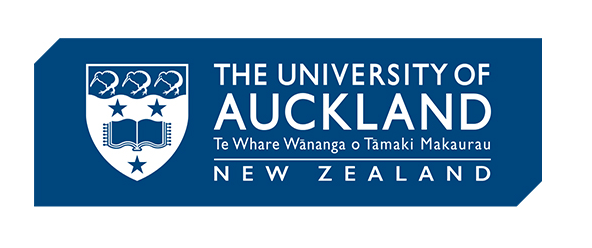Series 3 - Webinar 1
2020: A Year without Public Space under the COVID-19 Pandemic
Towards Healthy Cities in the Age of Pandemics
Thursday 2 July 2020 / Series 3 (June) - Webinar 1
>>> Speakers and agenda
>>> Programme of our COVID-19 initiative
The webinar was initiated and hosted by Luisa Bravo (City Space Architecture / The Journal of Public Space) and Hendrik Tieben (Chinese University of Hong Kong), part of the series “2020: A Year without Public Space under the COVID19 Pandemic”. This session presented the findings of a comparative study on the Role of Urban Forms in Making Sustainable, Healthy Cities, funded by the Worldwide University Network. The purpose of this study is to innovate research on urban community well-being at the intersection of urban and health sciences by initiating an international, interdisciplinary research network based at the University of Auckland, University of Sydney and the Chinese University of Hong Kong. The webinar brought together a group of specialists from urban design, planning, policy, environmental and public health to discuss how these urban issues represent a complex phenomenon that is not likely being resolved through a single discipline approach.
Credits
Recorded video of the webinar produced by Yin-Fen Chen, The Chinese University of Hong Kong
Summary of the webinar curated by Stephanie Cheung, The Chinese University of Hong Kong
Hendrik opened the webinar by recapping a key insight from a previous webinar: the importance of a cross-disciplinary approach and that healthcare workers should not be the only one responsible for public health. Hendrik also set the context by reminding all of us of past worldwide lessons from epidemics such as Spanish flu, plague, SARS, in the perspectives of urban forms, density, and designs.
Insights from speakers
Kevin Lau, Chinese University of Hong Kong, Hong Kong - “Development of Community Assessment Tool for Promoting Active Lifestyle”
Physical activity is proven to have great benefits on health and other perspectives such as the environment. Transdisciplinary partnerships are required to improve physical activity and thus quality of life. The study aims to look at four categories to assess the built environment: 1) recreational resources (e.g. open space, aesthetics of environment), 2) land use characteristics, 3) neighbourhood form characteristics (e.g. street network and lighting), 4) community environment. It also reviewed a list of relevant physical and social factors such as walkability, accessibility to and availability of facilities, air quality, social connection, community participation, sense of belonging, socioeconomic status, and human behaviour; and examples from foreign countries, such as Healthy Built Environment Linkages Toolkit, Built Environment and Active Transportation (Canada).
Hong Kong is a high-density living environment with an average population density of built-up areas at 27,330 persons per sq. km., Kevin felt that there is a need to optimize future development and improve existing development. The study aims at developing the community assessment toolkit, so as to support decision-making and promote physical activity through urban design. The ongoing study will go through a series of engagement and consultation sessions and a field testing. A pilot study in Kwun Tong revealed issues (obstruction and poor quality of sidewalks, traffic congestions) that the team would use to improve the toolkit.
Leigh Wilson, University of Sydney, Australia - "Health impacts of COVID-19 related policies for public space”
Leigh started the presentation by sharing the context of COVID-19 in Australia, which declared COVID as a pandemic on 11 March, and had cruise ship Ruby Princess become the epicentre of Australia’s coronavirus outbreak, causing 22 deaths and more than 600 confirmed cases. The current numbers (30 June 2020) stood at 7,800+ cases and 104 deaths.
With this as backdrop, Leigh conducted an online study on how COVID-19 and the lockdown have impacts on wellbeing with a particular focus on access to the environment, mental health, challenges and benefits. Nearly half of the women respondents expressed higher anxiety, and 33% of them had less exercise, and 22% thought that there were positive impacts on exercising. Other qualitative comments expressed longer working hours, difficulty for parents to homeschool children and work at the same time, and the lack of space for play and exercise.
Lee Beattie, University of Auckland, New Zealand - “In a Post-Covid 19 New Zealand, can we return to the local?”
As life returned to normal in New Zealand, rather than ‘return to business as usual’, Lee saw this as an opportunity to change, to reflect on how urban planners and designers could design better public spaces and manage the public realm better, in order to create liveable and walkable communities with active travel options.
One of Lee’s first realizations of COVID was how un-resilient parts of the urban systems were, the pandemic highlighted underlying problems in societies, such as access to affordable housing, access to technology, homelessness, but also the social costs of social dislocation, and the issue of building housing blocks on productive soils. The concepts of liveability and resilience were well discussed on documents and policies, but the reality is car-centric areas and city growth patterns. Post-COVID is a chance to create a new urban form, and to set in place policies and plans that would create a different set of normative behaviour and actions and sustainable resilient communities. Lee also identified several barriers to change, including the preference for large single stand-alone houses, the perception of loss of property values, balancing affordability and negative gearing of the housing market, the need for stronger state intervention, and the ability for the industry to build non-generic housing. As a professional and educator, Lee believed that this is the time to capture the narrative and steer it into the direction of delivering liveable, sustainable, and resilient local communities.
Kim Dirks, University of Auckland, New Zealand - “New Zealand COVID-19 Lockdown and Roads as Public Spaces”
Kim started her presentation by sharing international examples of significant improvements in air quality during the COVID lockdown period, as shown in satellite images and surface measurements. Similarly in New Zealand, which went through six weeks of lockdown, as residents stayed at homes and were only allowed to walk, bike and exercise around local neighbourhoods, there was a huge drop in vehicle usage and air quality was quoted to have improved by up to 90%. Some also said that there was an improvement in soundscape with audible wildlife.
Kim and her team developed the Site-Specific Semi-Empirical (SOSE) Model several years ago. The model could predict air quality and pollution levels, given traffic levels corresponded to historical levels, and taking wind speed, wind direction, and historical data into account. The model was able to tell what the pollution levels could have been given the traffic level was normal during pandemic. The comparison graphs of air pollution levels before and during lockdown clearly showed a significant drop of observed pollution levels after lockdown, when compared to the predictions made by the model, and could thus give reliable figures of percentage drop of pollution levels.
Respondent
Manfredo Manfredini, University of Auckland, School of Architecture and Planning, New Zealand
Manfredo highlighted the idea of multi-dimensionality that weaved through the presentations on space and public health. Going beyond the street and health aspects, the issues discussed also related closely with different aspects of socio-economics, and elaborated on how socio-economic inequality related to health disparity, and how the pandemic only exacerbated them particularly in places like the Corona Plaza. Manfredo also thought that today’s presentations covered a wide range of perspectives, for example, Kevin brought in the complexity of the assessment and addressed often overlooked cultural and societal factors. Manfredo further explained the importance of looking beyond streets and cities planning, but zooming into microeconomics in the public realm and developing people’s social and economic capacities. Leigh, on another hand, looked at the topic of mental health in Sydney, which Manfredo considered as an important issue that would trigger other personal health issues, particularly for elderly who experienced isolation and loneliness during COVID.
Echoing Lee’s sharing, Manfredo agreed the need to work towards sustainable city development and to address the complicated issue of management of urban growth. During COVID there was an emergence of actions to minimize inequalities, New Zealand’s government had taken the approach to weigh people’s wellbeing over businesses from the start of the pandemic, engendering a completely different distribution and development patterns. With these takeaways from COVID, Manfredo felt that we should re-focus on other ways of addressing the questions of cities and public health in this multi-dimensionality and in relations with people, their social, mental, and cultural perspectives.
Roundtable discussions
Kevin, can you elaborate more on how the ongoing research reflects the COVID situation in Hong Kong?
The reason for rapid development of SARS was the compact environment, which led the government to develop the air ventilation assessment. Kevin felt that the urban environment had improved since then, with more ventilation corridors in newly developed areas, more gaps in buildings, to improve the permeability of the city. He thought that the outbreak of COVID-19 was related more to crowds than the city design, however there is a need to rethink how urban forms can accommodate the change of behaviour triggered by the pandemic, for example, whether small parks in urban areas would still be the ideal form of park development when people are used to social distancing. This is also the reason why the toolkit Kevin is working on not only considers the physical environment as the only factor that affects physical activity, but also takes social and cultural factors into consideration.
How do you think we can implement the comprehensive assessment toolbox? What would be the biggest roadblocks?
Lee felt that it would be very interesting to run comparative studies and how that transpires between different types of urban environments.
How “work from home” should reflect on the design and access of adjacent open space, particularly in a dense built environment?
Kevin shared his personal experience during the lockdown - he stayed at home for a month, without any access to balcony or rooftop gardens, and only started going out for individual sports and hiking trails when the situations relaxed. He felt that there is a change in behaviour, in how people select the mode of exercising and the space they would use (as many try to avoid parks where there might be crowds), and urban designers should take this into account in future designs.
Leigh shared how some of her survey respondents reflected that they felt very confined within their home and working at home also brought up other work health and safety issues. Not everyone could have an appropriate set up to work at home, and not everyone could enjoy access to some kinds of open space, Leigh felt that these are important factors to consider in the future as more people would be working at home.

In addition to health professionals, it is an incentive for people not to continue transmitting the virus and to think about starting to flatten the curve.
Art created jointly by Ângela Oyafuso and Suzy Sakano, who made the illustrations, under the guidance of Eunice Liu.
Submitted for United Nations Global Call Out To Creatives - help stop the spread of COVID-19.





